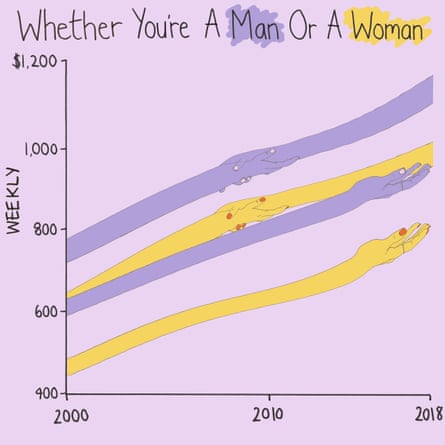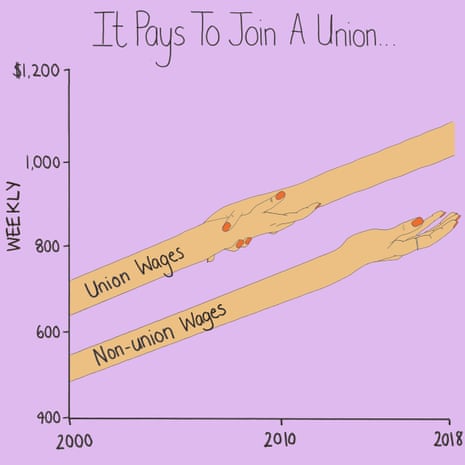Union membership in the US has fallen dramatically over the last generation. In 1980, one in five workers were in a union, but today it’s just one in 10. Despite that, data shows being in a union is still very effective in protecting the rights of workers and their earnings.
Data on full-time wage and salary workers comes from the Bureau of Labor Statistics (BLS). The bureau’s numbers on weekly earnings show a clear and consistent fact: members of unions earn more than non-members.
The earnings of those represented by unions were almost identical to the earnings of those who are members (for the charts below, I used membership). Women who are members of unions earn $10 more per week than men who aren’t members of a union.

The racial pay gap is so large that although union membership has a big impact, it still does not quite bridge the difference. Black union members earn $63 less each week than their white counterparts who are non-union. Hispanic workers who are non-union have some of the lowest earnings in the country – just $657 per week, almost half of what white union members can expect.

